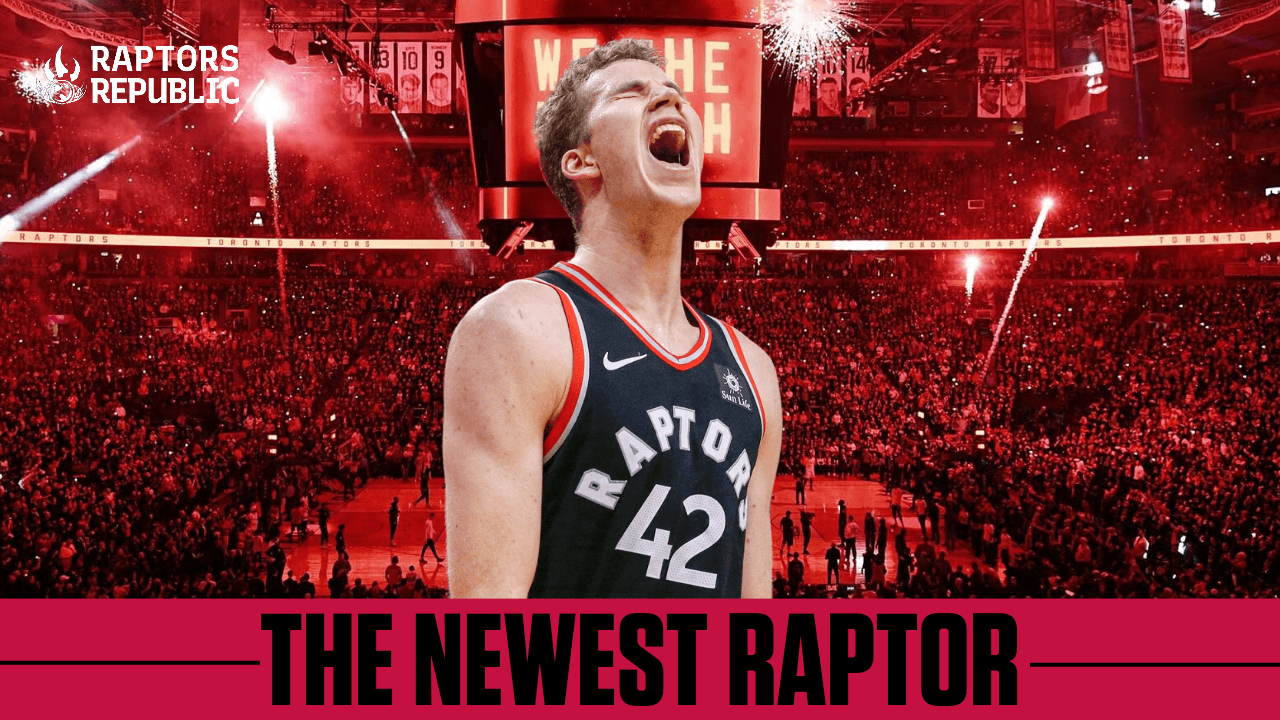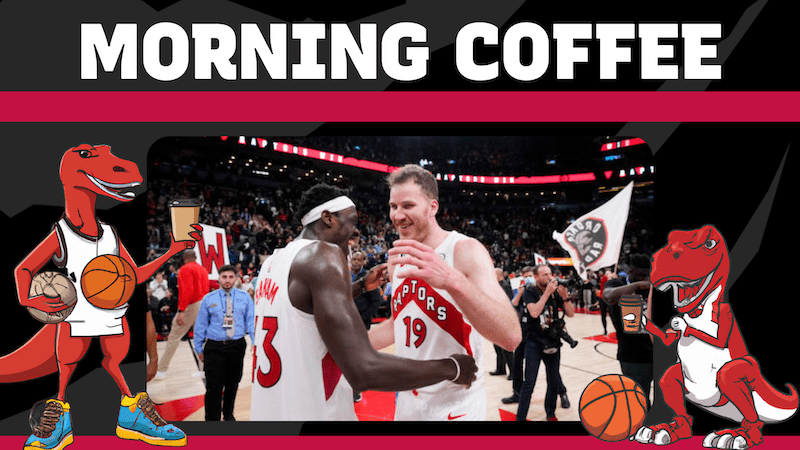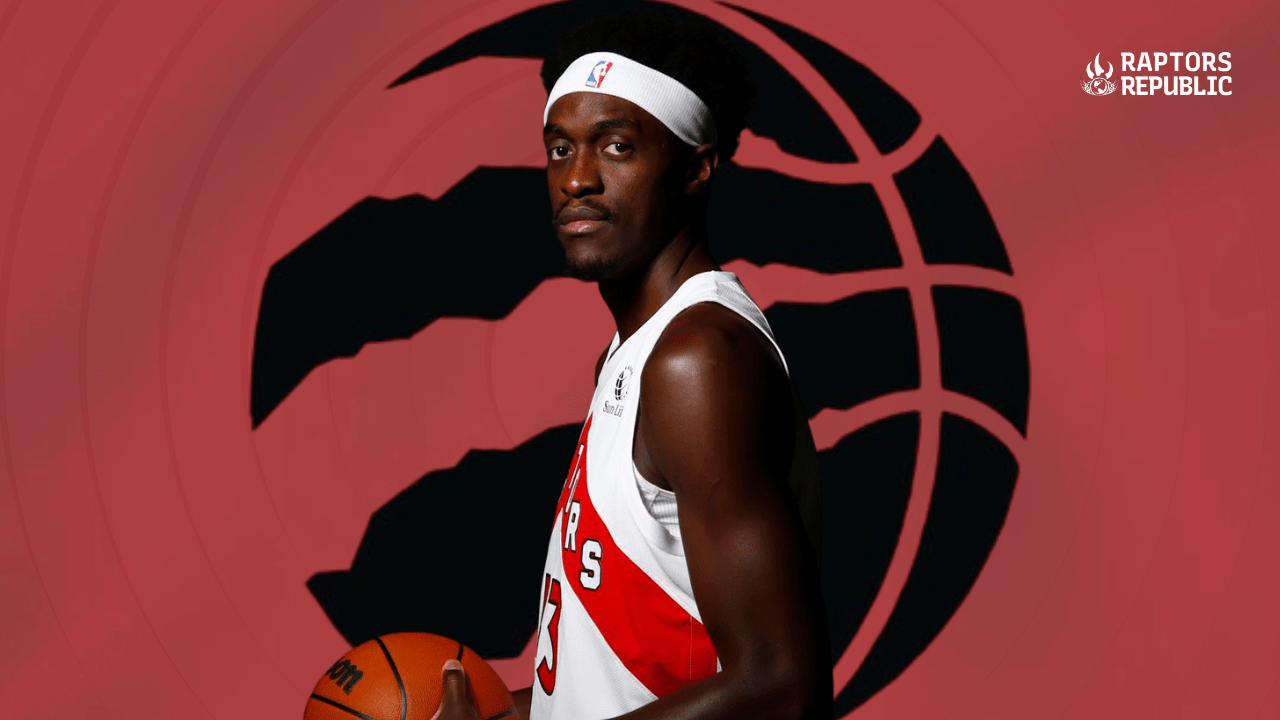The following is a guest post by John Hannant-Minchel.
The first three games of Jakob Poeltl’s return to the Toronto Raptors have been a mixed bag. Their record over those games is a promising 2-1, but given the records and (lack of) ambitions of the three teams they’ve faced, it’s safe to say that there have been some ups and downs.
That said, Poeltl’s play has been one of those ups. His monster 30-point, nine-rebound, six–block game against the Magic was the cherry on top of what has been a quietly positive impact on the team. While it’s unlikely Poeltl posts similar numbers over this final 23-game stretch, he really doesn’t need to. It’s not star talent and eye-popping box-scores that Poeltl adds to the team, it’s fit. Obviously, swapping a non-rotation player for a starter-level player, like Poeltl, adds talent, but more importantly, his addition can help maximize the talent the Raptors already have.
Defense and rebounding
The Raptors play an aggressive form of defense. They play with a lot of ball pressure and help defense to try to create turnovers and win the possession battle.
Winning the possession battle is important because they don’t have a particularly efficient half court offense, in fact they’re 27th in half court points per play. When you don’t score on a great percentage of possessions, you need to try to get more chances. In addition, when the Raptors are able to generate turnovers, specifically live-ball turnovers, they’re able to get out in transition where they’re decidedly more efficient; Raptors are fourth in transition points per play.
While this riskier approach to defense can result in more turnovers – something the Raptors have had success with – it can also create holes for offenses to exploit. When a turnover isn’t generated, Raptors’ defenders often find themselves out of position, creating opportunities for opposing players to get better shots at the rim.
Having a big rim-protecting center like Poeltl allows the Raptors to stay aggressive and force turnovers by providing resistance when this aggression creates holes and opposing players do get into the paint. In Poeltl’s first three games with the Raptors he’s sent away nine shots, but even when he isn’t getting blocks, he’s making the looks more difficult for opposing offenses. At the same time, the team is still forcing a higher rate of turnovers with him on the court than off.
Poeltl also helps the Raptors win the possession battle by attacking the offensive and defensive glass. Poeltl has been an excellent offensive rebounder since his rookie season with the Raptors, but over his career he’s improved as a defensive rebounder too. This means Poeltl can help the Raptors add extra possessions on the offensive glass, while limiting opponents’ extra possessions on the defensive glass.
Finishing in the paint
Poeltl excels finishing close to the rim. His 74.1 field goal percentage within five feet becomes the best on the Raptors. Poeltl is particularly adept at finishing highly contested shots in close.
This is good news for Raptors ball handlers, because now, when Pascal Siakam draws help close to the basket, he can dump it off to Poeltl knowing that Poeltl has the height and touch to finish a large percentage of those looks. Similarly, in the pick and roll, Fred VanVleet (and maybe even Malachi Flynn) now have a big roll target who can finish reliably in traffic. Rookie Christian Koloko has the size to catch those passes, but only shoots 56.1 percent within five feet, likely due to a lack of strength and touch. This skill was on full display in Tuesday night’s game against the Orlando Magic, where Poeltl scored 30 points on 15/17 shooting, all inside the paint.
Offensive Connector
On top of the skills that “true” centers often bring to a team, there’s another skill that Poeltl brings to the table, that is less typical of bigs, and that is his passing. He’s not the only player on the Raptors to possess this skill, but Poeltl is able to do it in a slightly different way. Often other core Raptors create for others by creating/exploiting an advantage off the dribble or out of a post-up. In either case, they require the ball in their hands a little longer to create that advantage for themselves, which sometimes translates into an advantage for a teammate.
Poeltl operates differently; he makes quick decisions and finds teammates off of screens (sometimes ones he sets), cuts, or in the chaos that follows an offensive rebound. He’s holding the ball for less time and dribbling less frequently than any other rotation Raptor. That quick decision making allows the offense to move more freely and cycle through more options, but it also gives his teammates incentive to be active and create advantages without the ball.
Too many times this season, the Raptors come down the floor on offense and decide whose turn it is to try to create an advantage on an isolation, or maybe off of a screen. Often the other players on the floor are uninvolved in this kind of play and wind up standing around. Poeltl doesn’t stand around beyond the arc; he’s always active. The type of off-ball movement Poeltl’s style of play should generate would benefit everyone and hopefully spread beyond his minutes on the floor.
Unselfish play
Potentially Poeltl’s most important attribute is his unselfishness. Unlike many of his new teammates, Poeltl doesn’t need the ball in his hands to be impactful. He is more than happy to serve as a screener, roller, and connector. Even after leading the Raptors in points and shot attempts against the Magic, he called himself a “role player.”
Adding Poeltl might allow Gary Trent Jr. to play with the ball in his hands more in a sixth-man role. Likely, it offers O.G. Anunoby and Scottie Barnes more touches among the starters. With one less possession-hungry ball handler on the floor to start the game, the Raptors may play a little less my-turn-your-turn on offense.
The move for Poeltl was not perfect. If things go south, the Raptors will regret the meager top-six protections on the 2024 first-round draft pick they sent out. Even if this season goes well, maybe Trent decides he doesn’t want to return to Toronto to come off the bench. Maybe Poeltl’s minutes detract from the development of Precious Achiuwa or Koloko. Maybe the Raptors aren’t able to find a way to re-sign all three of VanVleet, Trent, and Poeltl and have to let one or more go. Those concerns are valid, and there’s nothing that can be said right now to assuage them.
All-in-all though, having a true center should also allow the rest of the roster to settle into roles that better fit their abilities. VanVleet looks like a pure point guard since Poeltl joined; maybe his skills have been latent, waiting for a rolling big to maximize them. Perhaps Achiuwa is better-cast as a power forward on the defensive end. Adding Poeltl to this underperforming core will allow fans and the front office to see how each of these pieces might fit together or not. We’ll have to see how things look once Anunoby and Trent return from injury; however, over these first three games, we’ve caught a glimpse of what this team could be. Toronto didn’t just acquire Poeltl at the trade deadline; it also bought time.




